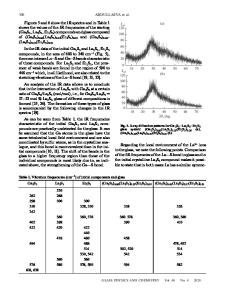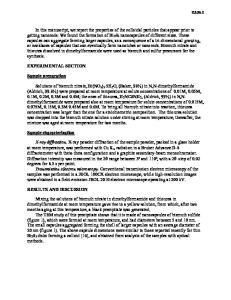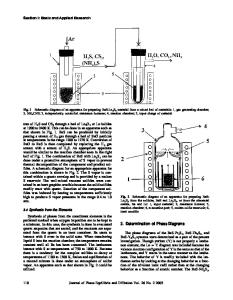Laser Ablation Deposition of Ga 2 S 3 -La 2 S 3 Glass Films
- PDF / 325,375 Bytes
- 6 Pages / 414.72 x 648 pts Page_size
- 22 Downloads / 376 Views
3
Glass Films
R. Asal, P.E. Rivers, H.N. Rutt Department of Electronics and Computer Science, University of Southampton, Highfield, Southampton, SO17 1BJ, UK. [email protected] ABSTRACT Gallium - lanthanum sulphide glasses (GLS) show wide range transparency and low non radiative relaxation rates for dopant ions such as Ho", Er3" etc. They also show permanent photomodification of the refractive index under visible illumination. We report laser ablation deposition of these glasses and preliminary results on film stoichiometry and deposition rate as a function of excimer laser fluence. The sulphur to metal and Ga/La ratios are found to have marked fluence dependencies. The films show considerably more Urbach tail absorption than bulk material. A novel method has been developed for mapping the permanent photomodified index. INTRODUCTION Gallium-lanthanum sulphide (Ga 2S3-La 2S3) ('GLS') glasses [1] have a range of novel optoelectronic applications. The material is transparent from -0.65pm to -10jim, covering the important near infrared telecommunications and mid infrared 'fingerprint' spectral regions. The lanthanum content ensures very high solubility for other rare earth dopant ions such as Er 3÷,Ho3 +,Pr3 +,Nd31 [2] etc which can be used as active laser or optical amplifier species. The low phonon energy of GLS glass gives rise to low non radiative relaxation rates, which opens the possibility of operating lasers in this host material in the mid infrared. Laser action to wavelengths approaching 51am may be feasible in high quality films. An unusual property of the material is that the refractive index can be substantially and permanently modified by exposure to illumination above the band gap, typically at 0.5145pm wavelength or shorter [3,4]. FILM DEPOSITION Target fabrication The use of these large targets ensures consistency of target material over mAblation targets are manufactured as gallium lanthanum sulphide glass disks of typically 40mm diameter by 10mm thick. any ablation experiments and freedom from target thermal damage and cracking. Gallium sulphide (70% molar) and lanthanum sulphide (30% molar) are weighed out under dry nitrogen into a vitreous carbon crucible pre placed in a silica ampoule. Particular care is taken with the source of the sulphide (Merck) to minimise contamination with oxysulphides. The silica ampoule is evacuated and heated to 1200C for two hours and then water quenched. The glass disc is clear orange/yellow, with some superficial bubbles where gas adhered to the crucible/glass interface. The discs release easily from the crucible and there is no evidence of attack. The targets are visually homogeneous and show visible and IR spectra typical of GLS glass. Energy dispersive X ray analysis shows the targets to be homogeneous and stoichiometric to within experimental error. The disc is ground down to a flat surface, cleaned, and mounted in a cup designed to provide a surface to radiate the absorbed power load and minimise conduction to the in-vacuum stepper motor drive. 253 Mat. Re
Data Loading...











